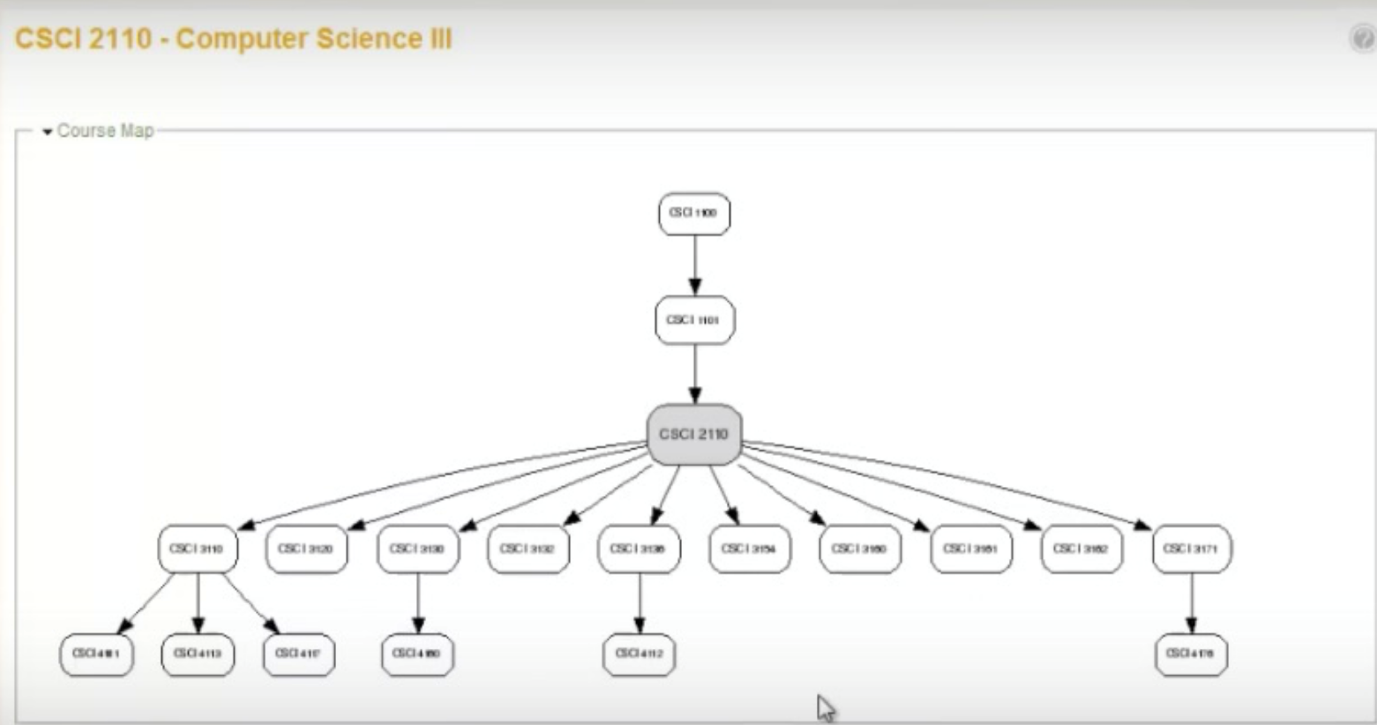7. The Implications of ‘Open’ For Course and Program Design: Towards a Paradigm Shift?
7.3. Disaggregation of Services
Open education and digitization enable what have tended to be offered by institutions as a complete bundle of services to be split out and offered separately, depending on the market for education and the unique needs of individual learners. These different services could be as follows:
- Academic guidance (assessment of learning needs; admission counseling)
- Choice of educational goals/outcomes/competencies
- Access to ‘open’ digital content in the form of OER or MOOCs
- Learner support, including a choice of
- Topic guidance (build a curriculum)
- Tutoring on demand (for example, when students are ‘stuck’)
- Different learning activities (tests, projects, etc.)
- Feedback on learning activities
- Assessment preparation
- Assessment on demand
Learners will select and use those modules or services that best fit their needs. This is likely to be the pattern for lifelong learners in particular. Some early indications of this process are already occurring, although most of the really significant changes are yet to come. Some examples are given below.

Admission and Career Counselling
This is a service already offered by Empire State University, a part of the State University of New York, through its pre-enrollment advisers. Adult learners considering a return to study or a career change can receive mentoring about what courses and combinations they can take from within the college that fits with their previous life and their future wishes. In essence, within boundaries, potential students are able to design their own degree. In the future, some institutions might specialize in this kind of service at a system level.
Build a Curriculum
Students could be advised on an appropriate curriculum that can be built to fit their needs. For instance, Dalhousie University’s Faculty of Computer Sciences has built a tool called Daedalus which basically enables the construction of a map showing the inter-relatedness between specific learning outcomes and course content, including course sequencing (see Contact North’s Pockets of Innovation for more details).
Once such a map of a degree program or other qualification or curriculum has been built, students can then navigate their own choice of courses or route through a curriculum – and perhaps negotiate what is needed for a degree. This could just as easily be based on OER as classroom teaching.

Learner Support
Students may have already determined what they want to study through the Internet, such as a MOOC. What they are looking for is help with their studies: how to write assignments, where to look for information, feedback on their work, and thinking. They are not necessarily looking for a credit, degree, or other qualification, but if they are they will pay for assessment separately. Currently, students pay private tutors for this service. However, it is feasible those institutions could also provide this service, provided that a suitable business model can be built.
Assessment
Learners may feel that through prior study and work, they are able to take a challenge exam for credit. Alternatively, a learner may wish to present a portfolio of work to demonstrate their knowledge and skills. All they require from the institution is a chance to be assessed. Institutions such as Western Governors’ University or the Open Learning division of Thompson Rivers University is already offering this service, and this would be a logical next step for the many other universities or colleges with some form of prior learning assessment or PLAR.
'Assembled' Qualifications
Learners may have acquired a range of credits, badges or certificates from a range of different institutions. The institution assesses these qualifications and experiences and helps the learner to take any further studies that are necessary, then awards the qualification. Prior learning assessment or PLAR is one step in this direction, but not the only one.
A Discount on Fully Online Courses and Programs
For learners who cannot or do not want to attend campus, the course fees would be lower for online courses than for students receiving a full campus experience.
Open Access to Content
In this case, the learner is not looking for any qualification but wants access to content, particularly new and emerging knowledge. MOOCs are one example, but other examples include OpenLearn and open textbooks.
The Full Campus Experiences
This would be the ‘traditional’ integrated package that full-time, campus-based students now receive. This would though be fully costed and much more expensive than any of the other single disaggregated services.
Funding Models
Note that I have been careful not to link any of these services to a specific funding model. This is deliberate because it could be:
- Covered through privatization, where each service is separately priced, and the user pays for that service (but not for others not used);
- Financed through a voucher system, whereby everyone at the age 18 is entitled to a notional amount of financial support from the state for post-secondary education, and can pay for a range of service from that voucher until their individual fund is exhausted;
- All or some services would be available for free as part of a publicly funded open education system
- A mix of the above.
Whatever the funding model, institutions disaggregating services will need to be able to price different services accurately.
The Argument Against Disaggregation
There are also strong arguments against the disaggregation of services. Gallagher (2019) argues that the successful colleges and universities of the future will be integrated: coherently and cohesively designed to help students achieve lifelong learning experience that is more than the sum of its parts.
However, this is not a question of either/or and should be driven to some extent by the needs of learners at different points in their learning cycle. Most younger students coming from high school probably will need an integrated college experience. However, working adults or students who have graduated may not want, need or can afford the full package. Disaggregation will provide the flexibility needed for lifelong learning.
The Need for More Flexibility in Services
In any case, there is now an increasing diversity of learners’ needs, from high school students wanting full-time education, graduate students wanting to do research, and lifelong learners, most of whom will have already passed through a publicly funded higher education system, wanting to keep learning either for vocational or personal reasons. This increasing diversity of needs requires a more flexible approach to providing educational opportunities in a digital age. Disaggregation of services and new models of funding, combined with increased accessibility to free, open content, are some ways in which this flexibility can be provided. For alternative views on this issue, see Carey, 2015; Large, 2015.
